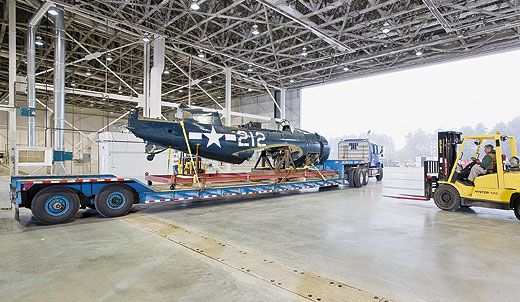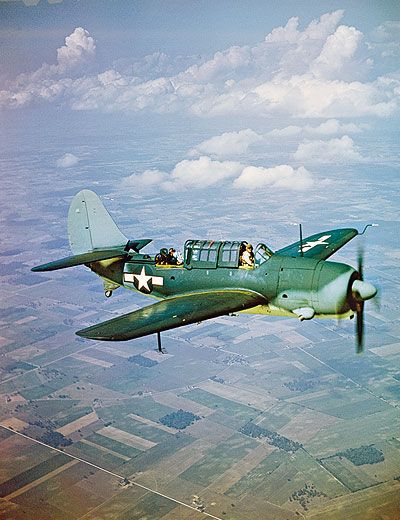In the Museum: Wanted: TLC for Misunderstood Warbird
Challenging the Helldiver’s bad reputation.
/https://tf-cmsv2-smithsonianmag-media.s3.amazonaws.com/filer/JJ11-in-the-museum-1-FLASH.jpg)
It was the last of a dying breed.
When the Curtiss SB2C-1 Helldiver (dubbed “the Beast” by its pilots, and “Son of a Bitch 2nd Class” by its mechanics) eventually made its way to its intended squadrons in November 1943, the dive-bomber, as a type, was nearly obsolete.
But that was only part of the airplane’s problem.
“It was the misfortune of the Helldiver to have to replace the [Douglas] SBD Dauntless, a legendary aircraft that helped turn the tide at the Battle of Midway,” says Hill Goodspeed, a historian at the National Naval Aviation Museum in Pensacola, Florida.
“Pilots were used to the airplane that they had been flying,” says Robert Mikesh, former senior curator for aeronautics at the National Air and Space Museum. “It’s just like an old shoe. You get comfortable with it, and you don’t like change. And I think that’s where the Helldiver got its bad reputation, because people liked the SBD [Dauntless]. It was an easy airplane to fly, very light and maneuverable. But the SB2C was an advance.”
One of the many pilots who grew to admire the Helldiver’s capabilities was Navy Lieutenant Donald Engen (later vice admiral), who would serve as director of the Museum from 1996 to 1999. His son, D. Travis Engen, and daughter-in-law Anne, contributed $15 million to build a restoration hangar at the Museum’s Steven F. Udvar-Hazy Center in northern Virginia, where the Museum’s Helldiver now awaits conservation.
The Mary Baker Engen Restoration Hangar (named after Donald’s wife) is large enough to accommodate several aircraft at a time, and a second floor balcony will allow visitors a behind-the-scenes look at the conservation process. A second aircraft, a Sikorsky JRS-1 amphibious seaplane—the only surviving example in the world—joined the Helldiver in the hangar in March.
“The conservation staff has performed their initial evaluation of the Helldiver,” says Dik Daso, the Museum’s curator of modern military aircraft, “and the results are encouraging; the preservation treatment will most likely be straightforward.” The only unknown is the condition of the engine. “The initial examination revealed exterior corrosion,” says Daso, “some of it extensive and in hard-to-reach places, which requires that the engine be removed from the aircraft and disassembled. This kind of work is delicate and time-consuming. But our restoration team has done this kind of thing before. I think they’re looking forward to it.”
Museum specialist John Shatz, who will be team chief on the project, estimates the restoration will take 10,250 hours, or approximately 18 months. “The aircraft will appear as it did when assigned to the USS Lexington with [squadron] VB-92 in September 1945,” says Shatz.
Built in Port Columbus, Ohio, the Museum’s SB2C-5 Helldiver was delivered to the Navy in May 1945. After serving as a pool aircraft for a Carrier Aircraft Service Unit in Guam, it was assigned to VB-92 in late 1945 (it was not flown in combat). After several stints in the aircraft pool, in 1948 it was stricken from the Navy’s inventory, at Norfolk, Virginia. It was sent to the Smithsonian, where it remained until 1975, when it was loaned to the National Naval Aviation Museum.
The SB2C-5 represented an improvement over previous variants. A redesigned cockpit grouped all electrically controlled equipment in a console on the pilot’s right side, and all mechanical controls in a console on the left. Instruments were located in panels in front of the pilot. While aircraft builder Curtiss-Wright had hoped to upgrade to a Pratt & Whitney R-2800 engine and increase the fuselage length by 20 inches, the modifications were scrapped as being too much change at one time.
Of the more than 7,200 Helldivers produced, only a few remain. The one in the Museum’s collection will eventually go on display in the Udvar-Hazy Center, where it will represent the state of U.S. naval technology in the Pacific Theater during World War II.

